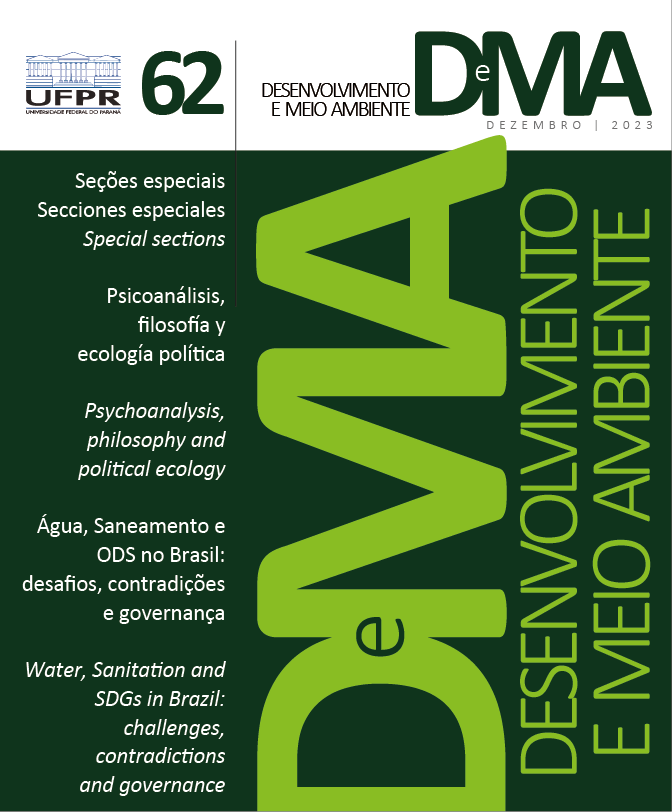What motivates rural riverine residents to adopt toilets? Findings from Central Amazon
DOI:
https://doi.org/10.5380/dma.v62i0.82997Keywords:
sanitation, qualitative research, floodplain, flooded areas, SDG 6Abstract
In the Brazilian Amazon, almost 4 million people lack access to adequate sanitation services, and part of this population still practices open defecation. To contribute to successful public policies, this article explores the factors that motivate rural riverine residents from Central Amazon to adopt and/or use toilets. From interviews, Focus Group Discussion and Content Analysis, it was verified that the main motivations are comfort and convenience in using a toilet and the protection it offers against dangerous animals or when it is raining. It was also found that privacy is a strong and authentic motivation for women, and that it meets the Sustainable Development Goals. These results contribute to regionalized sanitation programs, which must take into account the opinion of those who benefit from the implementation of sanitation social technologies.
Downloads
Published
How to Cite
Issue
Section
License
Copyright on works published in this journal rests with the author, with first publication rights for the journal. The content of published works is the sole responsibility of the authors. DMA is an open access journal and has adopted the Creative Commons Attribution 4.0 Not Adapted (CC-BY) license since January 2023. Therefore, when published by this journal, articles are free to share (copy and redistribute the material in any medium or format for any purpose, even commercial) and adapt (remix, transform, and create from the material for any purpose, even commercial). You must give appropriate credit, provide a link to the license and indicate if changes have been made.
The contents published by DMA from v. 53, 2020 to v. 60, 2022 are protected by the Creative Commons Attribution-NonCommercial-NoDerivatives 4.0 International license.
DMA has been an open access journal since its creation, however, from v.1 of 2000 to v. 52 of 2019, the journal did not adopt a Creative Commons license and therefore the type of license is not indicated on the first page of the articles.




